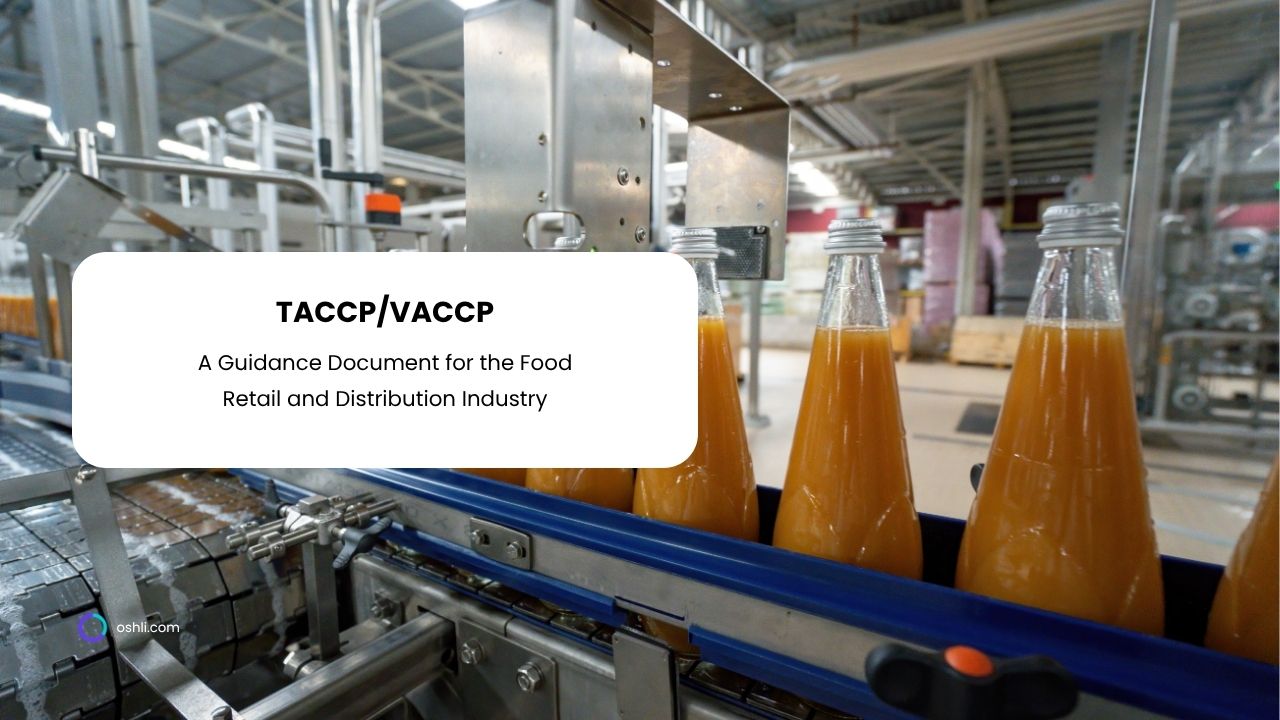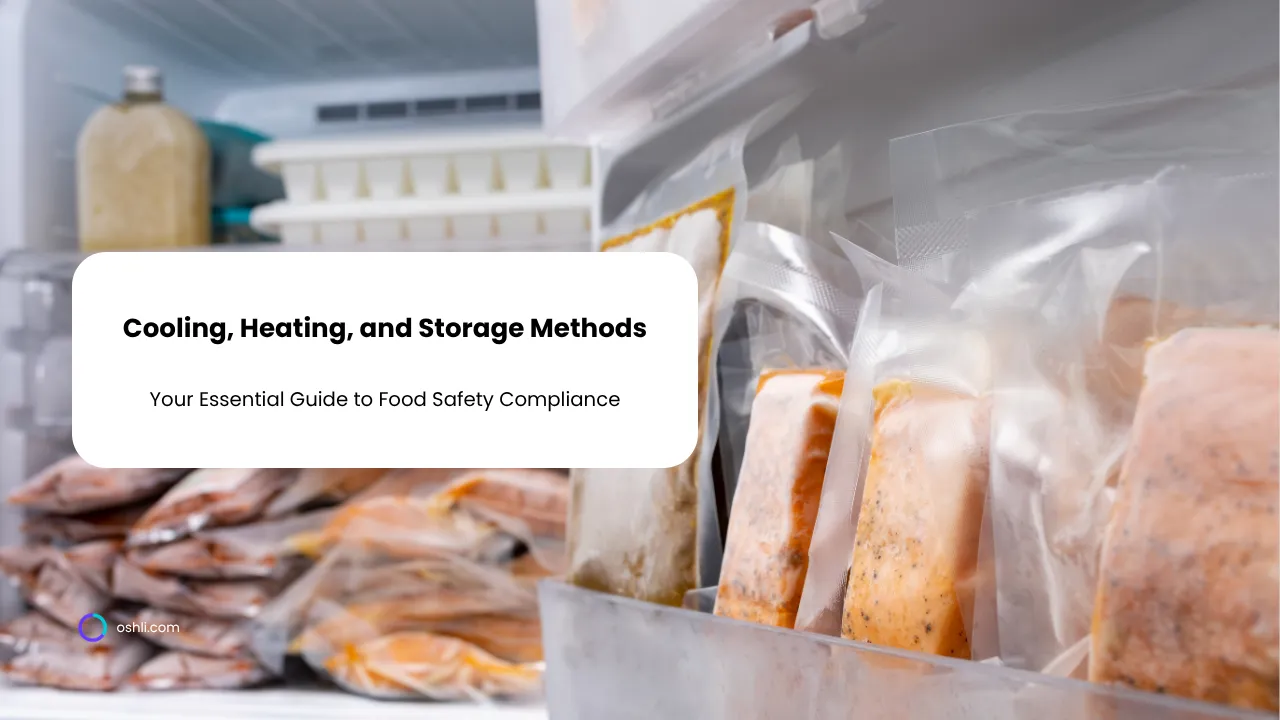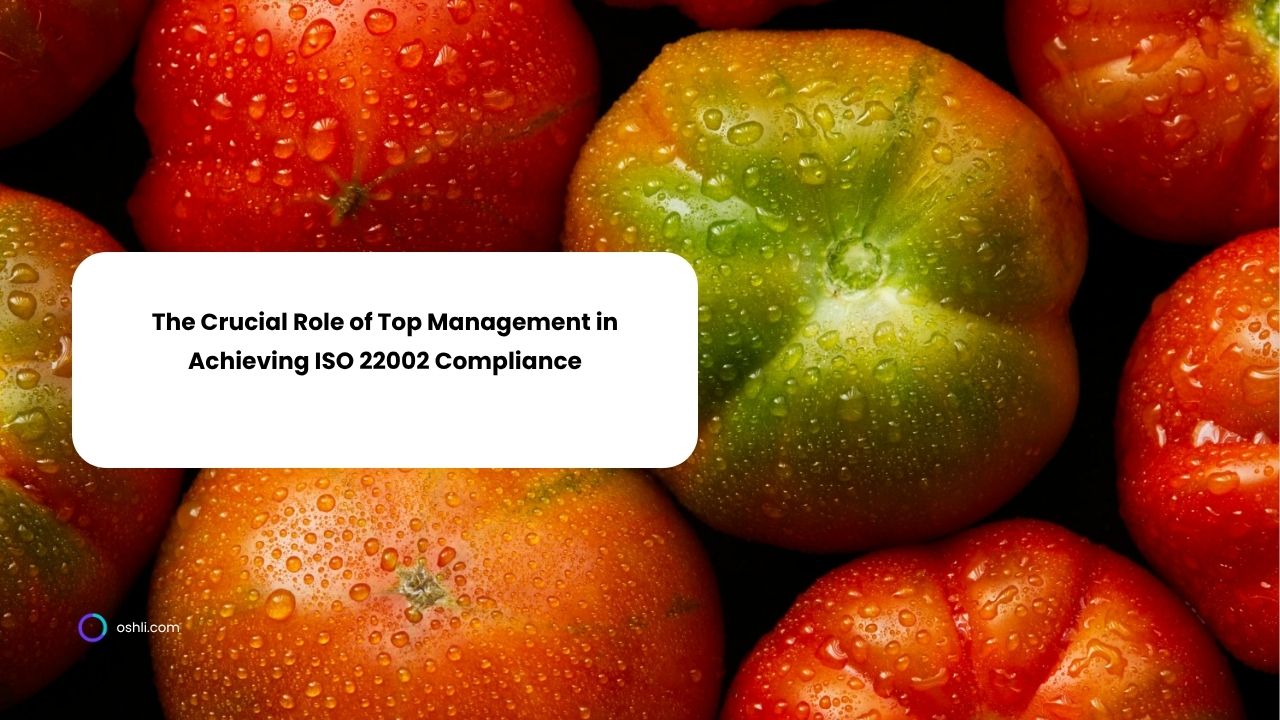
- Introduction
Food retailers and distributors play a critical role in maintaining the integrity and safety of food throughout the supply chain. While HACCP (Hazard Analysis and Critical Control Points) focuses on unintentional hazards to food safety, the increasing risk of deliberate contamination and food fraud has led to the development of TACCP (Threat Assessment and Critical Control Points) and VACCP (Vulnerability Assessment and Critical Control Points).
These methodologies help organizations protect food products from malicious attacks, economically motivated adulteration, and integrity breaches.
1.1 What are the aims of TACCP and VACCP?
TACCP (Threat Assessment and Critical Control Points) aims to identify and control deliberate acts intended to harm consumers, brands, or supply chains (e.g. sabotage, bioterrorism, or malicious contamination).
VACCP (Vulnerability Assessment and Critical Control Points) focuses on preventing fraudulent activities, such as mislabelling, adulteration, or substitution for economic gain.
Both systems support a Food Defense and Food Fraud Prevention Plan, strengthening resilience and trust throughout the supply chain.
1.2 How does TACCP/VACCP compare to HACCP? Aspect HACCP TACCP VACCP Objective Control of unintentional hazards Control of intentional contamination Control of economically motivated adulteration Hazard Type Biological, chemical, physical Intentional acts (sabotage, terrorism) Fraudulent activities (substitution, mislabelling) Drivers Food safety Security and defense Ethics and economic integrity Team Food safety specialists Cross-functional (security, logistics, HR) Supply chain, procurement, QA Tools Hazard analysis Threat assessment Vulnerability assessment 1.3 Considerations When Conducting Your TACCP/VACCP
When conducting TACCP or VACCP studies, organizations should consider:
Legal and regulatory requirements (e.g. EU Food Defense guidance, ISO 22000:2018, ISO 22002-100/7:2025, GFSI).
Company size and complexity of operations.
Potential intentional and economically motivated threats.
Supply chain integrity and transparency.
Communication with authorities and partners.
- Starting a TACCP/VACCP Study
Before starting, establish management commitment and allocate resources. The process typically involves:
Appointing a competent leader or coordinator.
Forming a multidisciplinary team.
Defining scope, boundaries, and objectives.
Conducting risk assessments.
Implementing mitigation measures and continuous review.
Top management must endorse the study, as the outcomes may require investments in physical security, supplier control, and traceability systems.
- Team Selection
The TACCP/VACCP team should be multidisciplinary, including representatives from:
Food safety and quality assurance
Security and IT
Human resources
Logistics and warehousing
Procurement and supplier management
Senior management
Each member should understand their responsibility for identifying, assessing, and controlling threats and vulnerabilities. Confidentiality agreements are recommended due to the sensitive nature of the information handled.
- Define the Scope of the TACCP/VACCP Study
Clearly define:
The products and services covered.
The facilities, departments, and external partners included.
The flow of goods (from supplier to consumer).
Boundaries (what is and isn’t under direct control).
A process flow diagram, similar to that used in HACCP, can be a useful visual tool to map where threats or vulnerabilities might arise.
- Review Current TACCP/VACCP Measures in Place
Evaluate existing systems that already contribute to defense and fraud prevention:
Access control and visitor management procedures.
Supplier approval and audit programs.
Product authenticity testing.
Traceability systems and data integrity controls.
Incident response protocols.
This review identifies gaps and prevents duplication of efforts across food safety, quality, and security management systems.
- Threat Characterisation
A detailed Threat Characterisation step ensures that the team identifies potential attack vectors, motives, and vulnerabilities. Threats can arise internally or externally and may target physical, chemical, biological, or cyber vulnerabilities.
6.1 Understanding the Threats and Vulnerabilities
Consider both intentional harm (TACCP) and fraudulent motivation (VACCP). Examples include:
Sabotage or contamination by disgruntled employees.
Substitution of ingredients with cheaper alternatives.
Theft or diversion of high-value goods.
Data tampering in electronic traceability systems.
6.2 Understanding the Attacker
Threats can originate from several domains:
6.2.1 Personnel
Disgruntled or coerced employees.
Temporary staff with minimal screening.
Contractors without adequate supervision.
Lack of awareness training on food defense.
6.2.2 Premises
Poor perimeter security (unlocked doors, inadequate lighting).
Lack of CCTV or intrusion detection.
Insecure waste disposal areas or loading bays.
6.2.3 Process
Uncontrolled access to raw materials or open product lines.
Poor segregation of high-risk areas.
Inadequate verification of cleaning or maintenance staff.
6.2.4 Services
Outsourced cleaning or pest control contractors without verification.
IT service providers with unmonitored system access.
6.2.5 Logistics
Unsealed transport vehicles.
Tampering during loading/unloading or cross-docking.
Use of unapproved third-party warehouses.
6.2.6 Cybercrime
Manipulation of digital traceability records.
Phishing attacks leading to falsified documentation.
Ransomware targeting food safety or warehouse management systems.
- Mitigation Strategy Development
For each identified threat or vulnerability:
Assess the likelihood and impact.
Assign a risk level (e.g. low, medium, high).
Develop mitigation measures, such as:
Strengthened access control and CCTV coverage.
Enhanced supplier verification and testing.
Anti-tampering packaging or seals.
Staff vetting, training, and awareness campaigns.
Document responsibilities and review timelines.
- Horizon Scanning for New and Emerging Threats
Implement a process for horizon scanning to identify emerging risks, such as:
New fraud techniques or adulteration trends.
Changes in geopolitical or economic conditions.
Emerging technologies affecting supply chain security.
Regulatory updates and enforcement actions.
Participation in industry networks and sharing information with authorities (e.g., RASFF, Food Industry Intelligence Platforms) enhances preparedness.
- Implementation
Once mitigation measures are approved:
Integrate them into existing management systems (e.g., ISO 22000, ISO 9001, ISO 45001).
Update Standard Operating Procedures (SOPs).
Communicate responsibilities to all affected personnel.
Provide targeted training on defense and fraud awareness.
- Recording and Documentation
All assessments and actions must be documented and retained. Records should include:
Team composition and meeting minutes.
Identified threats, vulnerabilities, and risk ratings.
Mitigation measures and verification results.
Training attendance and incident logs.
Documentation supports transparency, traceability, and audit readiness.
- Audit and Review
Regularly audit and review the TACCP/VACCP system to ensure:
Effectiveness of control measures.
Updated risk assessments based on new intelligence.
Corrective actions following incidents or near misses.
Continuous improvement aligned with ISO 22000 and GFSI expectations.
Annual reviews are recommended, or immediately following major organizational or supply chain changes.
- Further Reading
ISO 22000:2018 — Food Safety Management Systems.
ISO 22002-100:2025 — Common Prerequisite Programmes.
ISO 22002-7:2025 — Prerequisite Programmes for Retail and Wholesale.
BSI PAS 96:2017 — Guide to Protecting and Defending Food and Drink from Deliberate Attack.
Codex Alimentarius (2023) — HACCP and Food Safety Principles.
GFSI Benchmarking Requirements (Version 2023).
European Commission: Food Fraud Network and RASFF Portal.
Join our newsletter!
Enter your email to receive our latest news.
Don't worry, we don't spam
Related Articles

Guide to Developing a Professional Checklist for ISO 45001 Diagnostic Audits
The ISO 45001 standard establishes a framework for Occupational Health and Safety Management Systems (OHSMS), aiming to enhance employee safety, reduce workplace risks, and create safer working conditions. A diagnostic audit aligned with ISO 45001 is a proactive approach that allows organizations to assess current compliance, identify weaknesses, and prioritize improvements. Central to this process is a professionally structured checklist that ensures consistency, accuracy, and depth in audit execution.

Cooling, Heating, and Storage Methods: Your Essential Guide
Discover how to create a cooling, heating, and storage methods template to ensure food safety, meet compliance, and optimize temperature control with free templates.

The Crucial Role of Top Management in Achieving ISO 22002 Compliance
Explore how top management's leadership drives ISO 22002 compliance, ensuring robust food safety management through commitment, policy, and oversight.


